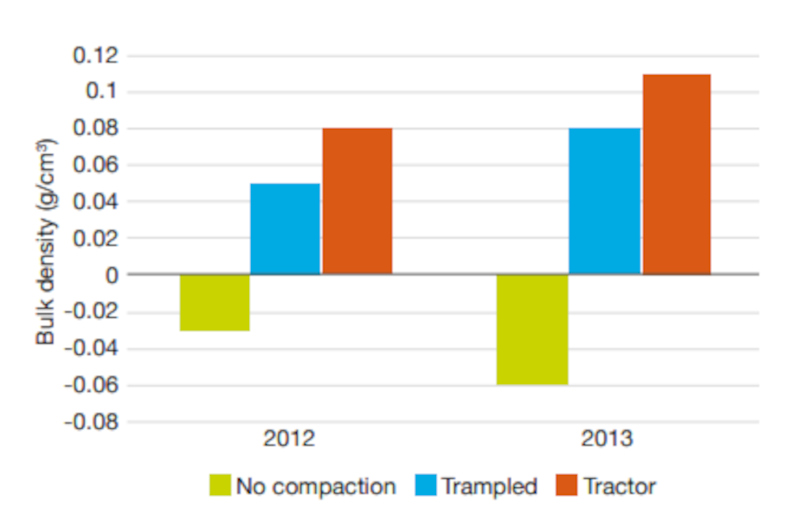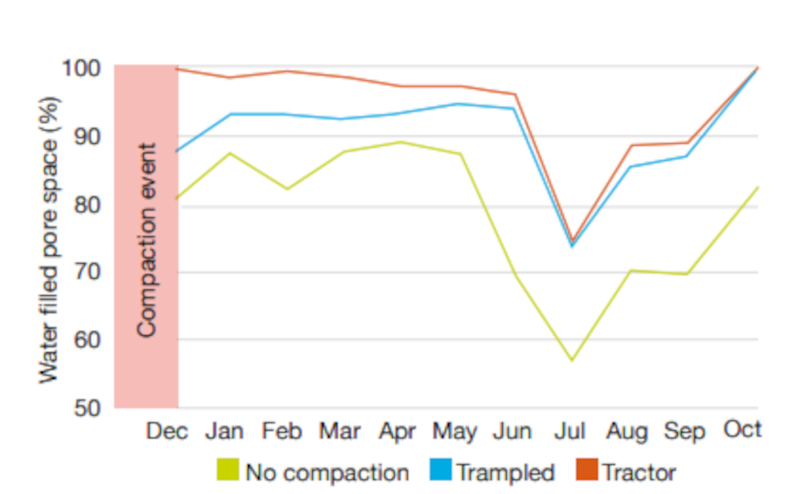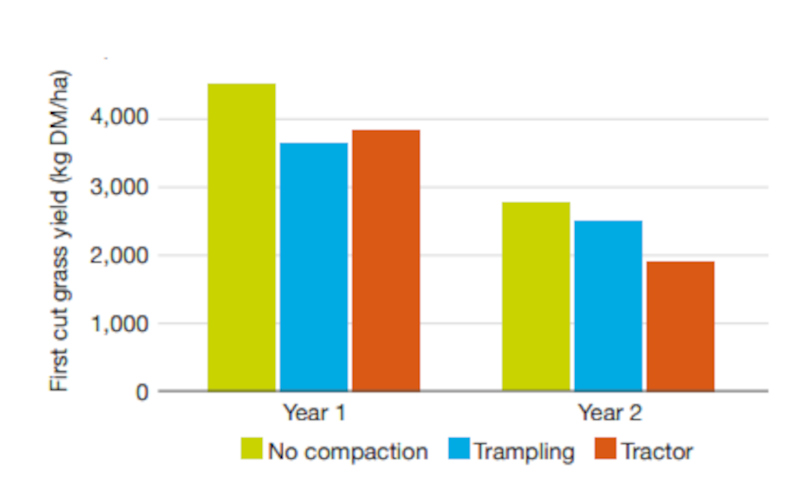Case study − grassland compaction and its impact on soil
Details of an AHDB Dairy-funded study to assess the impact of compaction on grassland productivity.
Overview
There were two locations for the study: Scotland’s Rural College (SRUC) in Dumfries and Harper Adams University (HAU) in Shropshire.
The sites had contrasting soil type and weather:
- SRUC had heavy, poorly draining silty clay loam and wet and cool weather
- HAU had light, sandy, freely draining soil and dry and warm weather
Grass plots were established from the autumn of 2011. Plots with no compaction were used as the control.
The other two treatments were tractor compaction and trampling compaction.
Comparing levels of compaction
The compaction occurred in the winter of 2011. Grass yield, quality and soil structure were measured.
Compaction increased the bulk density of the soil, resulting in fewer air spaces within the soil.
The impact was greatest with tractor compaction.
The bulk density of the control plots reduced over time, meaning that the structure improved.
The impact of compaction on change in soil bulk density at 0−10 cm at the SRUC site

Pore space
The proportion of the pore space filled with water was highest in the plots that were driven on.
The soil did not drain as well as in the control plots.
The dramatic drop in July coincided with a dry spell, so the number of water-filled pore spaces fell.
However, the problems returned when it rained.

The impact of compaction on soil water-filled pore space at 0−10 cm depth
Yield
The yield of the first cut was affected by compaction – grass DM yield was reduced up to 12% by trampling and 19% by tractor compaction.
The impact of compaction on first-cut grass yield at SRUC

The suggested cost of compaction is:
- Loss of yield (10–20%)
- Nutrient loss (30–40%)
- Reduced grazing days (5–10 days)
Useful links
Find out how to spot, solve and prevent compaction by machinery
Find out about how to spot, solve and prevent compaction by livestock
Find out more about machinery for removing compaction on grassland soils
Find sessions near you on compaction and tyre technology

